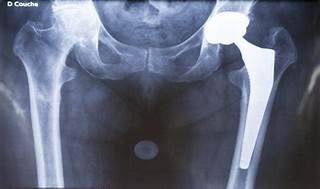A nurse is caring for a patient who has respiratory alkalosis and hyperventilating. Which of the following interventions should the nurse implement?
Administer sodium bicarbonate to the patient.
Provide a paper bag for the patient to breathe into.
Monitor the patient's head being between their knees.
Administer acetazolamide to the patient.
The Correct Answer is B
Choice A reason: Administering sodium bicarbonate is not indicated for respiratory alkalosis as it is an alkalinizing agent and could worsen the condition.
Choice B reason: Breathing into a paper bag can help to rebreathe CO2, which can help correct the pH in cases of hyperventilation-induced respiratory alkalosis.
Choice C reason: Having the patient's head between their knees is not a standard intervention for respiratory alkalosis and could be uncomfortable or unsafe for the patient.
Choice D reason: Acetazolamide is a diuretic that can cause metabolic acidosis to compensate for respiratory alkalosis, but it is not typically used for acute management of hyperventilation.
Nursing Test Bank
Naxlex Comprehensive Predictor Exams
Related Questions
Correct Answer is B
Explanation
Choice A reason: While bed rest may be required immediately after surgery, patients are typically encouraged to mobilize as soon as possible to prevent complications.
Choice B reason: Using a special soap the evening before surgery is a common preoperative instruction to reduce the risk of infection.
Choice C reason: A CPM machine is often used after hip replacement surgery to promote movement and prevent joint stiffness.
Choice D reason: A heating pad is generally not recommended on the operative site immediately after surgery due to the risk of burns and bleeding.
|
The correct answer is choice B. “You will use a special soap to shower with the evening before your surgery.” Choice A rationale: Remaining in bed for at least the first 24 hours is not typically recommended. Early mobilization is encouraged to prevent complications such as blood clots and to promote faster recovery. Choice B rationale: Using a special soap to shower with the evening before surgery is a common preoperative instruction. This helps reduce the risk of infection by decreasing the number of bacteria on the skin. Choice C rationale: Continuous passive motion (CPM) machines are generally used for knee replacement surgeries, not hip replacements. They help in maintaining joint mobility and preventing stiffness, but are not standard for hip surgeries. Choice D rationale: Using a heating pad on the operative site is not recommended as it can increase swelling and the risk of burns. Cold therapy is usually preferred to reduce pain and inflammation postoperatively. |
|
Correct Answer is D
Explanation
Choice A reason: While nurses play a role in the informed consent process, they are not responsible for obtaining the consent for the surgery.
Choice B reason: An anesthesiologist may obtain consent for anesthesia but not for the surgical procedure itself.
Choice C reason: The surgical suite nurse assists in the operating room but does not obtain consent for the surgery.
Choice D reason: The surgeon performing the procedure is responsible for obtaining informed consent from the patient, making this the correct answer.
Whether you are a student looking to ace your exams or a practicing nurse seeking to enhance your expertise , our nursing education contents will empower you with the confidence and competence to make a difference in the lives of patients and become a respected leader in the healthcare field.
Visit Naxlex, invest in your future and unlock endless possibilities with our unparalleled nursing education contents today
Report Wrong Answer on the Current Question
Do you disagree with the answer? If yes, what is your expected answer? Explain.
Kindly be descriptive with the issue you are facing.

